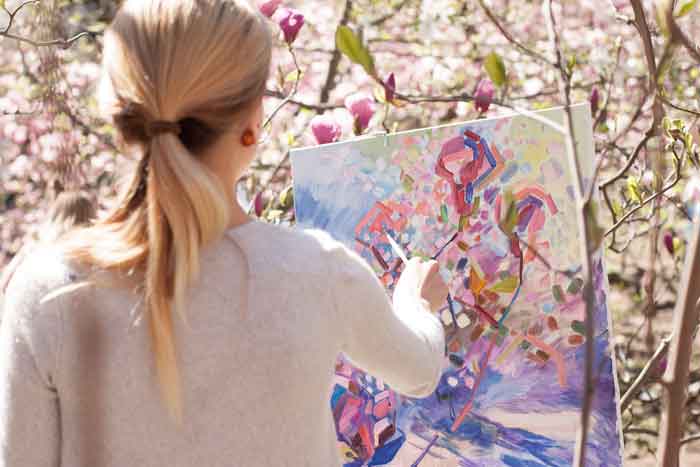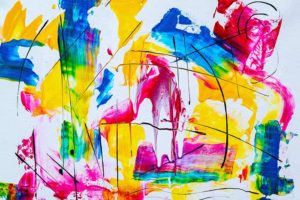Art has been an integral part of human culture and expression for thousands of years. From the earliest cave paintings to contemporary digital media, art has served as a means of communication, self-expression, and social commentary. Despite its many benefits and positive impacts, there are also challenges and disadvantages associated with art.
In this article, we will explore a list of ideas for writing an art essay.
Support / Advantages of Arts
1. Art as a means of self-expression and communication:
A painter may use color, form, and composition to express their emotions and ideas in a way that transcends language barriers.
2. Art as a way to preserve history and culture:
A historical mural can depict important events and figures from a community’s past, helping to keep their stories and traditions alive for future generations.
3. Art as a tool for social and political commentary:
A political cartoon can use satire and humor to comment on current events and spark discussion and debate.
4. The therapeutic benefits of creating and experiencing art:
Creating art can provide a sense of accomplishment and purpose, while experiencing art can offer an escape from everyday stressors and promote relaxation.
5. The role of art in education and personal development:
Exposure to art in the classroom can help students develop critical thinking skills, creativity, and cultural awareness.
6. The economic impact of the arts industry:
The arts industry generates jobs and revenue through the production, distribution, and sale of creative goods and services.
7. The transformative power of art in community development:
Public art projects can revitalize neglected neighborhoods by attracting visitors, fostering community pride, and promoting economic growth.
8. The importance of public funding for the arts:
Public funding for the arts can help ensure that all members of a community have access to cultural experiences, regardless of their income or background.
9. The impact of art on tourism and local economies:
Cultural attractions such as museums, galleries, and festivals can draw tourists to a region, boosting the local economy through increased spending on lodging, dining, and souvenirs.
10. The role of art in promoting diversity and inclusion:
Art can provide a platform for underrepresented voices to be heard and can challenge stereotypes by presenting diverse perspectives.
11. Art as a means of promoting empathy and understanding:
A novel or film that tells the story of a person from a different culture or background can help us understand their experiences and see the world from their perspective.
12. The role of art in fostering creativity and innovation:
Engaging with art can encourage us to think outside the box and approach problems in new and creative ways. For example, a designer might draw inspiration from a sculpture or painting when developing a new product.
13. The impact of art on mental health and well-being:
Creating or experiencing art can provide a sense of calm and relaxation, helping to reduce stress and improve mood. For example, listening to music or painting can be a form of self-care and emotional release.
14. The importance of preserving and promoting traditional art forms:
Traditional art forms such as weaving, pottery, or dance can help keep cultural traditions alive and connect us with our heritage. For example, a community might hold a festival to celebrate and showcase their traditional arts and crafts.
15. The role of art in shaping cultural identity:
Art can reflect and shape our cultural values and beliefs. For example, public art such as murals or sculptures can convey a sense of community pride and identity.
Against / Disadvantages of Arts
1. The high cost of art education and materials can create barriers to entry for aspiring artists:
For example, tuition fees for art schools can be prohibitively expensive, and the cost of materials such as paints, canvases, or specialized equipment can add up quickly, making it difficult for artists from lower-income backgrounds to pursue their passion.
2. The subjective nature of art can make it difficult to evaluate and measure its impact:
For example, the value of a work of art is often determined by personal taste or market demand, rather than any objective criteria, making it difficult to assess its cultural or social significance.
3. The commercialization of the art world can prioritize profit over artistic expression:
For example, galleries or museums may focus on exhibiting works by well-known or commercially successful artists, rather than supporting emerging or experimental artists whose work may be less marketable.
4. The art market can be unpredictable and volatile, making it difficult for artists to earn a stable income:
For example, the value of an artist’s work can fluctuate wildly based on factors such as market trends or critical reception, making it difficult for artists to plan for their financial future.
5. The lack of diversity and representation in the art world can perpetuate systemic inequalities:
For example, women and artists of color are often underrepresented in galleries and museums, and their work may be undervalued or overlooked by the art establishment.
6. Art can be used as a tool for propaganda or manipulation:
For example, governments or corporations may use art to promote a particular ideology or agenda, rather than allowing artists to freely express their own ideas and perspectives.
7. The commodification of art can reduce its cultural and social value:
For example, when art is treated primarily as a commodity to be bought and sold, its intrinsic value as a means of self-expression or cultural preservation may be diminished.
8. The preservation and restoration of art can be costly and time-consuming:
For example, preserving and restoring historical works of art requires specialized knowledge and expertise, as well as significant financial resources, which may not always be available.
9. The global trade in art can contribute to the illicit trafficking of cultural property:
For example, looted or stolen artifacts may be sold on the international art market, depriving communities of their cultural heritage.
10. Artistic expression can sometimes be controversial or offensive, leading to censorship or suppression:
For example, works of art that challenge social norms or values may be censored or suppressed by governments or other authorities.
11. The competitive nature of the art world can create pressure and stress for artists:
For example, the pressure to constantly produce new and innovative work can take a toll on an artist’s mental health and well-being.
12. The emphasis on originality and innovation in art can discourage the preservation of traditional art forms:
For example, traditional art forms such as folk music or handicrafts may be overlooked in favor of more contemporary or avant-garde expressions.
13. Artistic success is often based on subjective criteria, leading to uncertainty and insecurity for artists:
For example, an artist’s success may depend on factors such as critical acclaim or market demand, which are outside of their control and subject to change.
14. The proliferation of digital media has made it easier for art to be copied or appropriated without permission:
For example, digital images of artworks can be easily copied and shared online without the artist’s consent, potentially depriving them of income or recognition.
15. The globalization of the art market can lead to the homogenization of artistic styles and expressions:
For example, the global reach of the art market may encourage artists to conform to certain styles or trends in order to appeal to a wider audience.
16. Artistic expression can sometimes be misunderstood or misinterpreted, leading to conflict or controversy:
For example, a work of art that is intended to provoke thought or challenge assumptions may be misinterpreted as offensive or inflammatory.
17. The focus on individual artistic expression can overshadow the importance of collaboration and community in the arts:
For example, the emphasis on individual achievement in the art world may discourage collaboration and cooperation among artists.
18. The pursuit of artistic excellence can sometimes come at the expense of personal well-being or relationships:
For example, an artist’s dedication to their craft may require long hours and intense focus, potentially straining their personal relationships or affecting their mental health.
19. Artistic expression can sometimes challenge social norms or values, leading to backlash or rejection:
For example, works of art that challenge traditional gender roles or question authority may face opposition from conservative elements within society.
20. The emphasis on youth and novelty in the art world can marginalize older or more established artists:
For example, older artists may find it difficult to gain recognition or support for their work if it is perceived as being out-of-step with current trends.
Conclusion:
In conclusion, art is a complex and multifaceted subject with many advantages and disadvantages. While art can serve as a powerful tool for self-expression, communication, and social change, it also faces challenges such as commercialization, commodification, and lack of diversity.
By exploring these ideas in greater depth, we can gain a deeper understanding of the role of art in our lives and society. Ultimately, it is up to us to support and promote the arts in our communities, while also addressing the challenges and disadvantages that they face.
Learn more
- Advertising Essay Ideas
- How to Write a Conclusion for an Essay
- How to write band 9 body paragraph in IELTS essay?
- Tips for IELTS opinion essay
- Tips for IELTS advantages and disadvantages essay
- Tips for IELTS discussion essay



